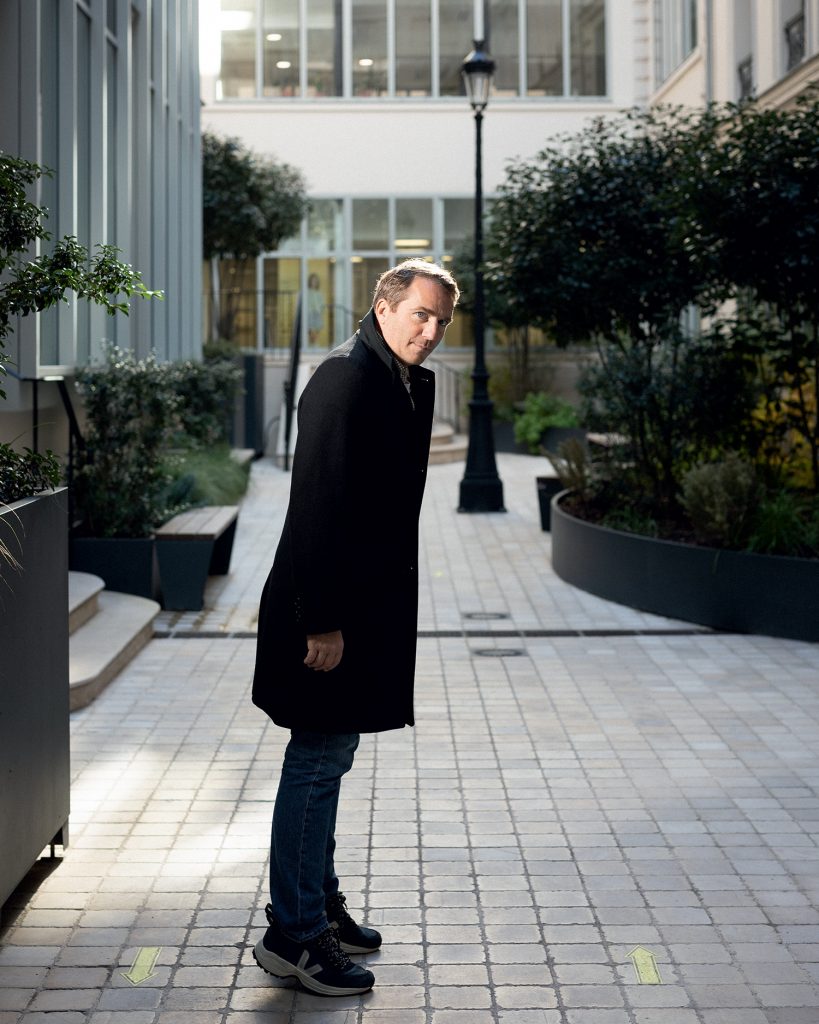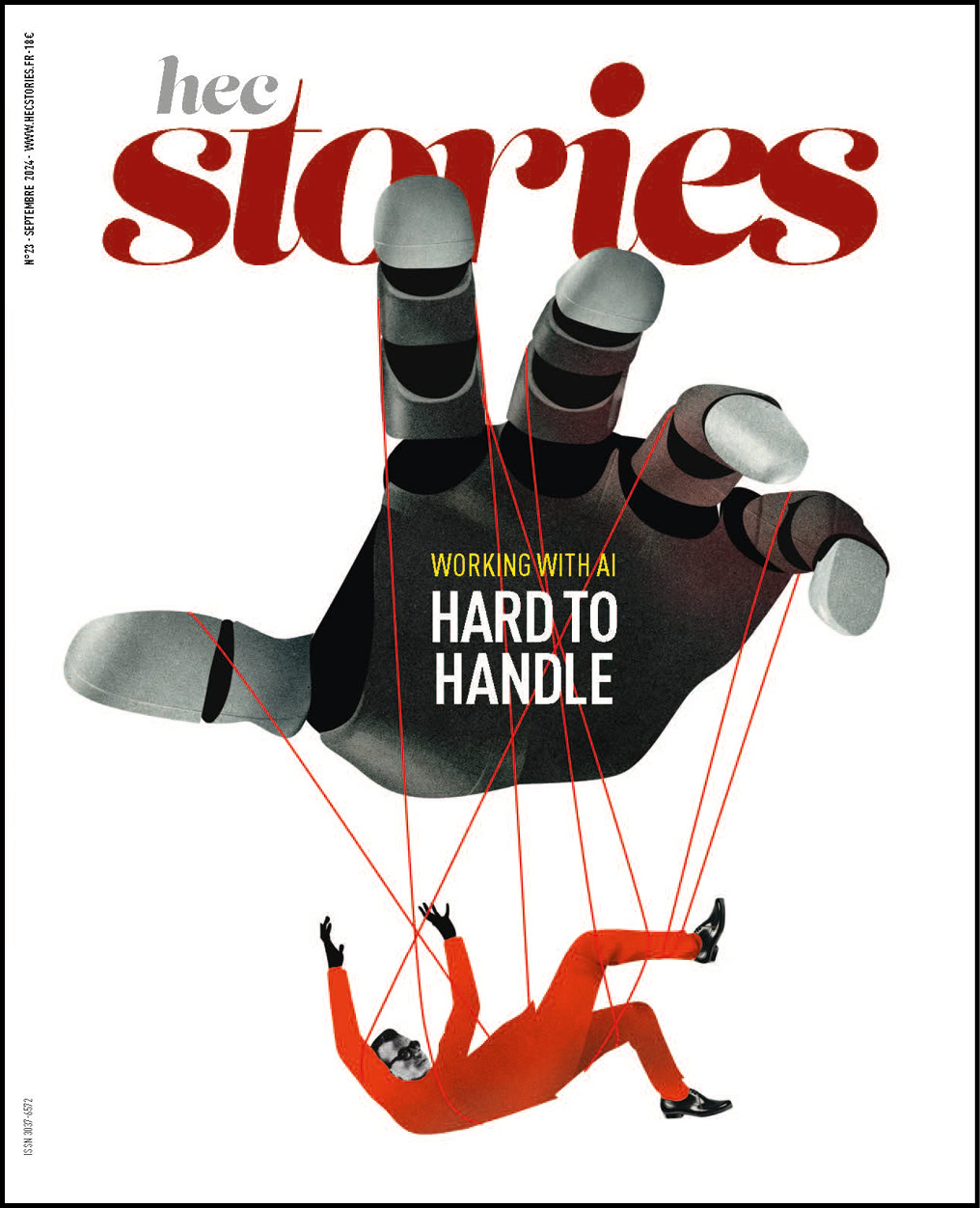A World without Advertising, by François-Ghislain Morillion (H.02)

As overconsumption threatens the planet, we ask ourselves: isn’t advertising a bit responsible for our spending frenzy? Some even suggest banning ads. So, goodbye Mr. Clean, Youpla-Boum and the orange pulp that always stays at the bottom? Tomorrow, no more advertising?
Just don’t do it: that could be the ad slogan of the Veja shoe brand…since it doesn’t do any advertising. The anti-Nike, founded in 2004, produces ecological and ethical sneakers in Brazil. And, in spite of the lack of ads, it achieves around 100 million euros in turnover every year. François-Ghislain Morillion (H.02), who co-founded the brand with Sébastien Kopp, explains the reasons behind their choice.
Veja doesn’t advertise. Why ?
François-Ghislain Morillion: Not doing any advertising allows us to sell our products at the same price as our competitors, even though our manufacturing process, which involves stringent social and environmental standards, costs us three or four times more. Advertising accounts for 70% of the cost of a big-brand sneaker. Not doing advertising gives us more freedom. For example, we can spend twice the market price on rubber in order to better reward small producers, which helps preserve the Amazon rainforest.
So you made this decision simply because it fits your economic model?
F.-G.M.:From the beginning, we thought of doing something without advertising, to be more efficient. But there are certainly more important reasons. Sébastien [Kopp, the co-founder] and I don’t really believe in advertising. We think that it’s a sort of crutch to promote products that, without it, wouldn’t attract customers. If the story told about a product has little to do with the product itself, then the product isn’t very interesting. The history of advertising is closely tied to the history of laundry detergent. If ever anyone invents a truly unique, even earthshaking laundry detergent, you’ll see that no advertising will be necessary! When Apple releases its latest phone (not counting the first iPhone), do you think that people would rush to buy it if there were no advertising campaign behind it? A product that is technologically or socially innovative, appealing because of its beauty or its true story, has no need of big ad buys to convince people.
“A true story doesn’t need advertising”
From the mythical ad for the first Air Jordan to Paul Pogba wearing a pair of Adidas Predators, there’s an aura around sneakers that has been burnished by advertising and sponsorship. As a sneakerhead since you were a teenager, have you been influenced by such practices?
F.-G.M.: At least a bit, unavoidably. And I think that the younger you are, the more you’re affected by the “wow” factor of advertising. I still remember Nike’s “Guerilla Tennis” video (1995), with Andre Agassi beginning a match right in the heart of New York City.
Back to Veja: how have you managed to make the brand famous worldwide without advertising?
F.-G.M. : We forgo advertising, but not communications! In fact, the first person we hired was someone to handle press relations. This allowed us to get many articles about Veja published in newspapers like Le Monde, Le Figaro or Libération. You also have to keep in mind the context of the mid-2000s. Social media weren’t as ubiquitous as they are today, and blogs were in their infancy.
So the press was your first communications tool. What kind of relationships do you have with journalists?
F.-G.M. : Even though we now work with press agencies all over the world, we establish direct connections with media. We think that an agency shouldn’t create a barrier, a screen. We also invite journalists to Brazil and our factory there so that they can experience the Brazilian Amazon first-hand. It’s back to basics. They live with our suppliers, and we don’t try to hide the rampant deforestation from them. This kind of thing is very different from the usual press junket.

What about influencers?
F.-G.M. : We don’t pay any influencer, or anyone, to talk about our brand. Sometimes celebrities promote us, without letting us know, and we find out through social networks. I remember an amusing post by the actress Marion Cotillard, five years ago, when she made clear that she didn’t receive a dime from Veja and that she had bought Veja sneakers on her own. “I have nothing to do with this brand. This is not publicity; this is just love.” This kind of post gives our brand credibility.
Veja launches one or two models of sneakers a year, on average, and puts photos of its shoes on its website and on social media. How do you come up with these visuals?
F.-G.M. : Some photos show the shoes being worn, which is a way to tell a story, in a sense, but this is still very different, I think, from the usual ad campaign. We really like brutalist architecture, and we often head to places like the National Dance Center in Pantin near Paris, or the Beaugrenelle complex, to shoot some pictures. Our clients abroad like seeing photos of Paris, so we have some fun showing places that are far removed from the clichés.
What is your total budget for these alternative methods you use to make your brand known?
F.-G.M. : Less than 0.5% of our turnover.
Your sneakers have a big “V” on the side. When your customers wear your shoes, they contribute in their own way to your brand recognition. To do without advertising, do you need to have a really visible logo?
F.-G.M. : Not necessarily, but the logo can help. We actually didn’t take this into account. It’s just something that every sneaker has. In fact, there’s an example of the opposite. The brand Agnès B. doesn’t do any advertising and its logo is very understated on its clothes, sometimes even invisible. Along with the founder of Alter Eco, Tristan Lecomte, Agnès Troublé, which is her real name, is the person who inspired us the most. This designer – with whom we had our first collaboration – knew how to incarnate her brand and promote it through means other than advertising, for example through her partnerships with artists.
The Citizens’ Convention on Climate aims to “forbid advertising of the most pollution-causing products and regulate advertising in general, to reorient consumerism to focus on more climate-friendly products and to stem overconsumption.” What do you think of this?
F.-G.M. :I don’t have a definite opinion; it’s a complex subject. What’s certain is that ads show a society what its contradictions are. I subscribe to L’Obs and I often see ads for SUVs next to reports on climate-change issues. As an entrepreneur, though, I prefer action: offer a different, more virtuous model instead of banning something. On the one hand, it’s dangerous to inspire wants and desires, to create limitless needs, in a world that is actually limited. On the other hand, I sometimes ask myself if advertising still sells products, or if it has become just smoke and mirrors that only tricks ad-industry professionals, who convince themselves that it’s still working.
Rubber: the more it costs, the less impact it has
“Our main suppliers are cooperatives of small producers who make a living harvesting latex in the Amazon rainforest. We realized that in addition to providing the product we buy from them, they perform a service for the planet: they preserve the Amazon rainforest. So, we have decided to reward this service by paying them one extra euro per kilo for the rubber we buy.”
Do you think there are too many ads in the metro and on the streets in Paris?
F.-G.M. : Yes, Parisians are confronted all day long by manufactured products, ecological or not, in fact. These things are not necessarily interesting, yet the human spirit needs to see things that are stimulating, that make us think. Art, for example! In São Paulo, Brazil, where I spent two years, the “Clean City” initiative, launched by the mayor in 2007, drastically reduced the size and number of posters and signs. I don’t know what it’s like now, but at the time there were no more giant billboards like in New York City. I enjoyed feeling cut off from new ad campaigns… Veja doesn’t want to be part of any visual pollution. Refusing to advertise is also an ecology of the spirit.
Blaise Cendrars called advertising “the flower of contemporary life”. Does it also have some good points?
F.-G.M. : I really like Blaise Cendrars, but I think advertising is anything but a flower. Here’s a different quote, of Angelus Silesius: “A rose doesn’t have a reason. It blooms because it blooms, doesn’t take care of itself, doesn’t ask ‘Am I seen?’” An ad is nothing like a flower, because it exists to sell something; it has a function. It’s not art. An ad photo can eventually, 50 years later, be considered art, but not when it’s first distributed commercially. Without bashing advertising, we still need to look at it with a critical eye.
Propos recueillis par Cyrielle Chazal
Published by Cyrielle Chazal

